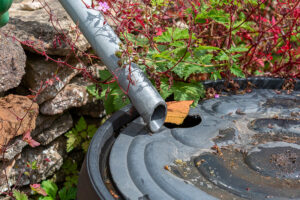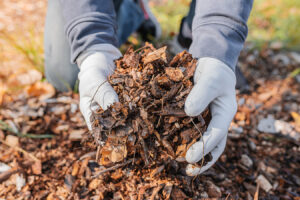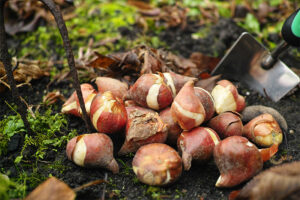Four gardening tips for autumn
As the autumn brings cooler, wetter weather, now’s the time to ensure your garden is making the most of every drop throughout the winter and into next year. Janet Manning, horticultural scientist, shares four simple tips for capturing the water and nutrients that nature provides.
1. Fix up a water butt for better watering
 If you haven’t got a water butt then now is the time to get one. Then you’ll have plenty of opportunity to collect the rain over the wetter months. Rain water is great for your garden as it is softer, contains nitrates, and has less salts and chemicals than tap water. So keep rain out of the drain and on your plants.
If you haven’t got a water butt then now is the time to get one. Then you’ll have plenty of opportunity to collect the rain over the wetter months. Rain water is great for your garden as it is softer, contains nitrates, and has less salts and chemicals than tap water. So keep rain out of the drain and on your plants.
2. Add mulch to reduce watering
 Adding organic matter improves water retention in soil, shades and cools roots and helps the rain to get in, all reducing the need for watering. Mulch such as wood bark or chippings is best added around new plantings in the Autumn as it decomposes slowly, providing a protective layer to absorb moisture and gradually release it back. Always keep a chunky top layer which will drain quickly and ensure water gets right through to the roots.
Adding organic matter improves water retention in soil, shades and cools roots and helps the rain to get in, all reducing the need for watering. Mulch such as wood bark or chippings is best added around new plantings in the Autumn as it decomposes slowly, providing a protective layer to absorb moisture and gradually release it back. Always keep a chunky top layer which will drain quickly and ensure water gets right through to the roots.
Homemade compost is best added in the spring, when plants start growing and can use the nutrients, but new plants, containers, borders and trees will benefit from a layer of organic matter at any time of the year.
3. Use a cover crop for healthy soil
 Don’t leave your soil naked! Cover crops conserve water and provide a range of benefits for your soil including reducing the surface temperature, helping the rain to infiltrate the ground, and protecting air spaces to maintain a healthy population of soil microorganisms. Cover crops grow using the winter rains to capture the soluble nutrients that may otherwise be lost into the deeper layers of soil beyond the roots.
Don’t leave your soil naked! Cover crops conserve water and provide a range of benefits for your soil including reducing the surface temperature, helping the rain to infiltrate the ground, and protecting air spaces to maintain a healthy population of soil microorganisms. Cover crops grow using the winter rains to capture the soluble nutrients that may otherwise be lost into the deeper layers of soil beyond the roots.
Empty veg beds can be sowed with overwintering winter tare (grass) or legumes which will also help to retain nutrients, and early spring flowering annuals such as Forget-me-Nots, could be a cover crop in an ornamental garden.
4. Plant bulbs for spring colour
 It’s bulb planting time. Bulbs grow roots throughout the wetter winter months ready to flower in spring, so needing little watering they are great for sustainable gardens and places where access to water is difficult. Plant daffodils in shady spots in September and then tulips in sunnier spots through to November, for a glorious show of Spring colour! The bulbs then become dormant through the hottest and driest parts of the summer, ready to enjoy again the following year.
It’s bulb planting time. Bulbs grow roots throughout the wetter winter months ready to flower in spring, so needing little watering they are great for sustainable gardens and places where access to water is difficult. Plant daffodils in shady spots in September and then tulips in sunnier spots through to November, for a glorious show of Spring colour! The bulbs then become dormant through the hottest and driest parts of the summer, ready to enjoy again the following year.
